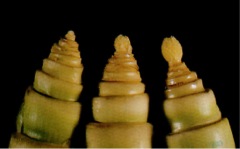This tip was provided by:
Calvin Trostle, Extension Agronomy, Lubbock, 806-746-6101, ctrostle@ag.tamu.edu
Statewide
Nitrogen Fertilizer Timing for Grain Sorghum
In the last Sorghum Tip I discussed the nitrogen requirement for grain sorghum production, which is different than how much N fertilizer you may apply. A field may have N credits, most likely from soil test nitrate-nitrogen, which a Texas A&M AgriLife soil test will credit 100% to you grain sorghum N requirement.
Nitrogen fertilizer timing for grain sorghum can involve pre-plant application, sometimes well in advance of cropping (especially if using anhydrous ammonia, which is often cheaper per unit of N) and pop-up fertilizer (in-furrow) or starter N (placed near the seed). Each have their place though conditions like the potential for water-logged soils and the time before planting can reduce efficiency for pre-plant applications. See the Texas sorghum production guides below for information about safe use of at-plant N to ensure that toxicity or fertilizer salts do not hinder germinating grain sorghum and seedling growth.
For in-season application of grain sorghum, the key reference point that guides timing of N application is the changeover of the growing point from producing another leaf to initiating the head (Fig. 1). In wheat (the same botanic family of grasses as grain sorghum), this generally occurs just before jointing, which you can see in wheat. But in grain sorghum there is nothing visual externally on the plant that signals this is occurring. Generally, this occurs about 30 to 35 days after planting.

Fig. 1. The growing point of grain sorghum after differentiation from leaf production to developing panicle, or head. This process initiates about 30 days or so after germination. In this image there is likely at most 2 days’ difference from left (early) to right. Spikelet number and potential seeds per spikelet—both important components of yield potential—are being determined for each head over a 7 to 10-day period.
Once growing point differentiation (GPD) occurs, the developing head must not be limited in needs for sufficient nitrogen (or water!), lest you cap your potential spikelets and seeds per spikelet, thus limiting your yield potential. Once GPD concludes you cannot increase spikelet number and seeds per head.
Historical guidelines from Texas A&M, Kansas State Univ., etc. have suggested that side-dress N fertilizer applications be completed by about a month after planting to meet your crop’s targeted N requirement. This can be a substantial amount of N for larger yield goals. Though all remaining N is not needed right then at GPD, in-season N applications were generally only made once, so it was necessary to apply the remainder of your N fertilizer soon.
Today, particularly where N fertilizer applications may be conveniently supplied by dissolving in irrigation water, some producers may elect to withhold a portion of their in-season N fertility after GPD to spread out the N application and perhaps increase nitrogen utilization efficiency. This could be up to 20% or so (an estimate on my part) of the N, but I would recommend that all remaining N be on the field by early boot stage. This would be within 50 days of planting for a medium-early maturity hybrid and about 60 days for a medium-long maturity hybrid. Kansas State Univ. research suggests that by the time late boot stage occurs 70% or more of grain sorghum’s required N will already be in the plant.
Further Information:
You can read additional information on several aspects of nitrogen fertility for Texas grain sorghum from the fertility sections of the West Texas and the South & Central Texas editions of United Sorghum Checkoff Program’s production guides, on the web at http://sorghumcheckoff.com/farmer-resources/grain-production/ The information is similar in both guides, which were prepared by AgriLife Extension staff.








